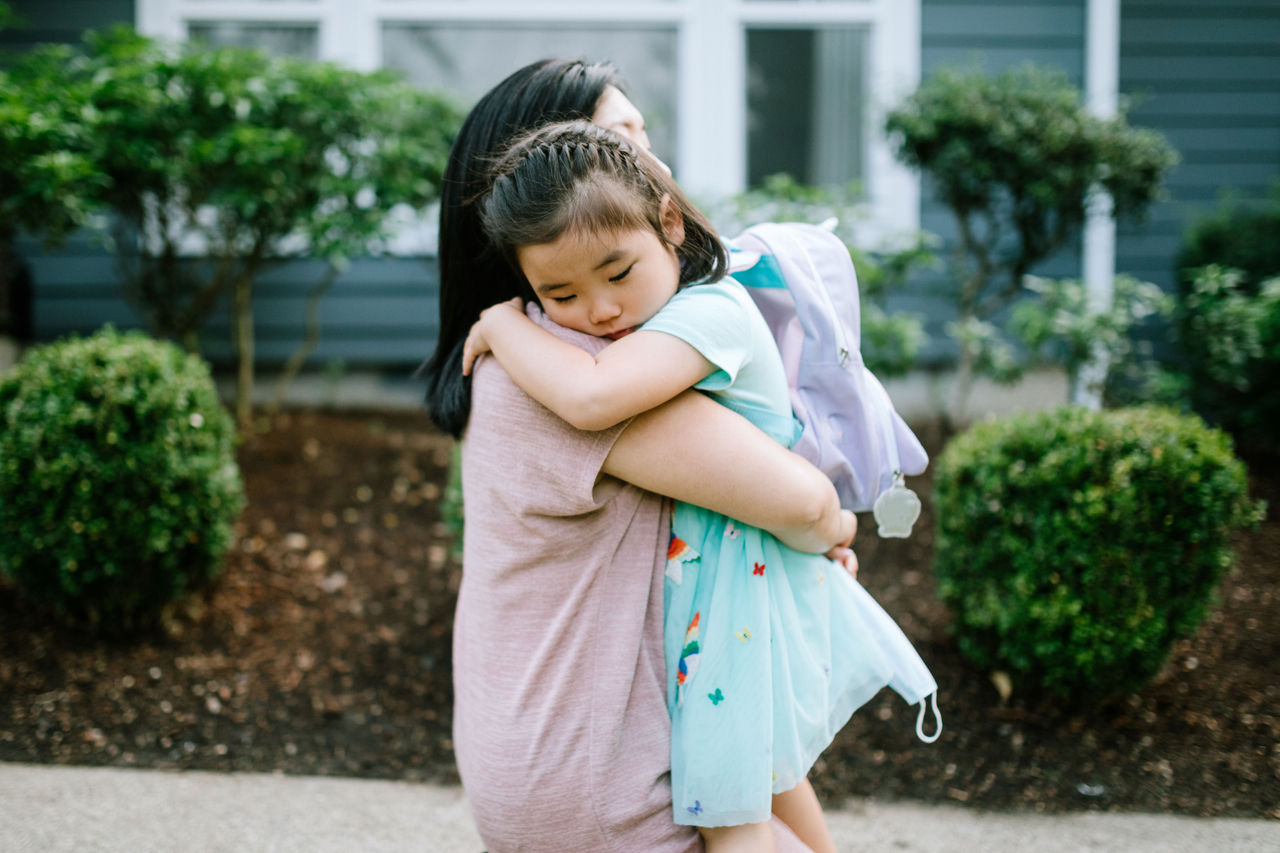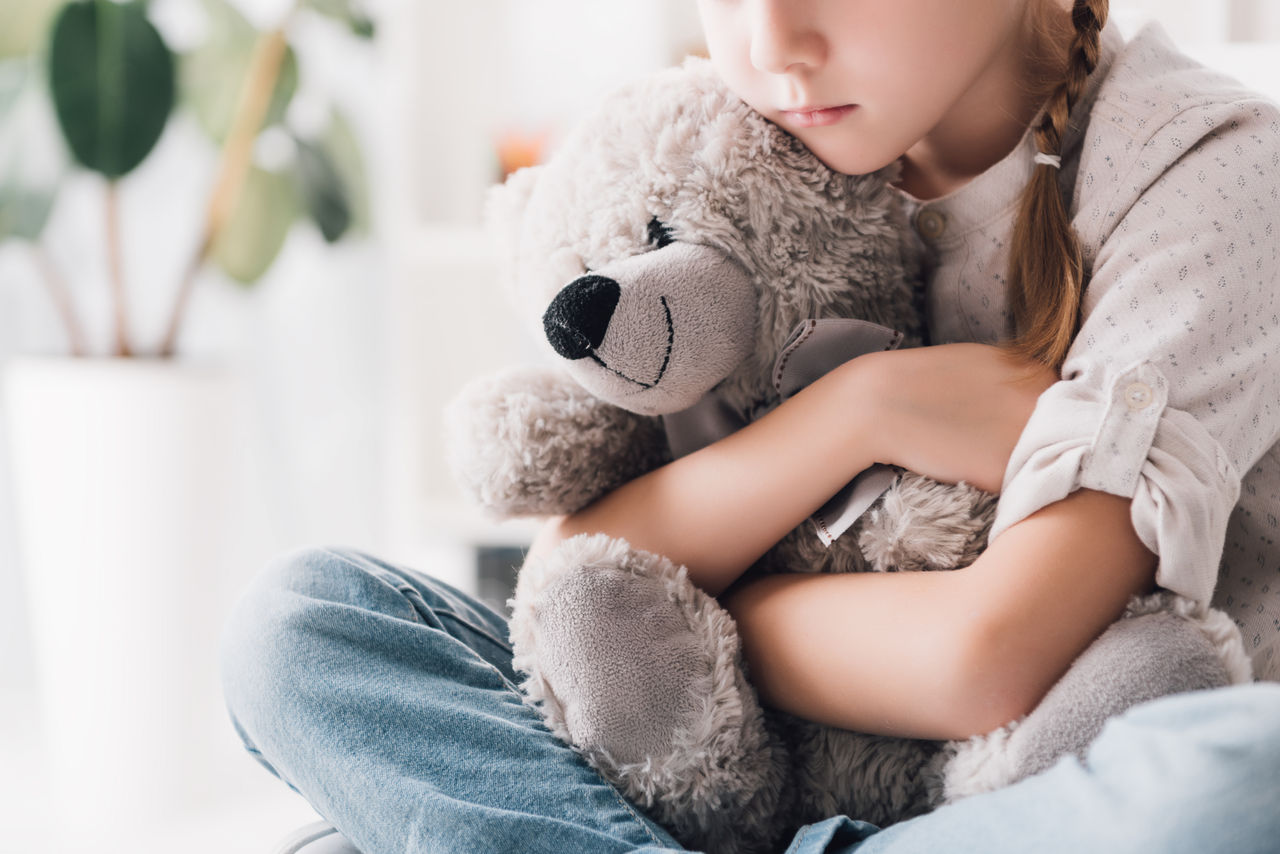Being a parent comes with lots of firsts — first steps, first words and the first daycare drop-off. There are so many emotions leading up to the big day from worry to excitement for children and adults. One of the biggest concerns is handling separation anxiety. Separation anxiety is fairly common, and while it may feel distressing, there are ways to help make drop-off less daunting.
Understanding Separation Anxiety: What Parents Need to Know
Separation anxiety is a stage in early childhood when a child feels anxious about being apart from their parent or primary caregiver. It’s a completely normal part of development that can start as early as 9 months, and means that your child has formed an attachment to you and misses you. It will fade overtime, usually around preschool.
Recognizing the Signs of Separation Anxiety in Children
Some signs of separation anxiety in children are obvious while others are more subtle. Look out for the follow signs and symptoms:
- Excessive worry or distress when separating
- Consistent fears of losing a parent or caregiver
- Frequent clinginess throughout the day, even when at home
- Panic, tantrums or complaints of physical sickness symptoms when separating
- Persistent worries that something bad will happen to a parent or caregiver
The Importance of a Smooth Transition: Tips for a Successful Daycare Drop-Off
One of the best ways to combat separation anxiety is to create a smooth, consistent transition to daycare each day. It is important to make drop off as easy and seamless as possible to help children overcome their separation issues.
Establishing a Consistent Routine to Help Manage Separation Anxiety
There are a number of steps you can take to make managing separation anxiety easier. Some best practices include:
- Keep goodbyes brief. Give your child a hug and a kiss goodbye, then leave. Drawn out goodbyes make transitions harder.
- Stay calm and collected. Children are incredibly perceptive and are likely to mirror your emotions. When you remain calm you help them do the same.
- Communicate with your child. Remind them that you will return to pick them up after a fun day at school with their friends.
- Offer your child a transition object. This can be a favorite stuffed animal or blankie that they can use to self-soothe during transitions.
Building Trust and Security: Strategies for Easing Separation Anxiety
Part of helping your child through separation anxiety is building trust and security with your little one. When you tell your child that you will return at the end of the school, keep your word. Don’t return earlier to check in on them because leaving for the second time may be even more difficult than the first, only exacerbating their separation anxiety. Keeping your word enables your child to become increasingly more confident in their ability to be away from you until you return. If you do want to check in on them, give your childcare center a call! They’ll be more than happy to fill you in on your child’s day.
Encouraging Independence and Self-Confidence in Children
Parents can help children learn how to cope with separation anxiety by encouraging independence and self-confidence before they arrive at daycare. Some of these strategies include:
- Practicing being apart outside of daycare drop-off. For example, schedule play dates with friends outside of your home.
- Staying consistent with your drop-off routine as best you can. Make your morning routine similar to your bedtime one — wake-up, brush teeth, eat breakfast and leave at the same each day.
- Introducing the concept of separating slowly, especially with infants. Do short trial runs of fifteen to twenty minutes so your child can see that you will always come back.
Communication and Collaboration: Working with Daycare Staff to Address Separation Anxiety
You don’t need to feel alone when helping your child work through separation anxiety. Childcare staff regularly care for children who struggle with separation issues and they are well-versed in managing separation anxiety. When parents and teachers work together they can help address and soothe anxiety in children more easily.
The best place to start is by reaching out to your child’s teacher to set up a meeting outside of drop-off and pick-up times to discuss your child’s separation anxiety. Together you can come up with a plan to help your child work through separation issues. Not only will your little one benefit from this partnership, but it will make handling separation anxiety easier for everyone.




